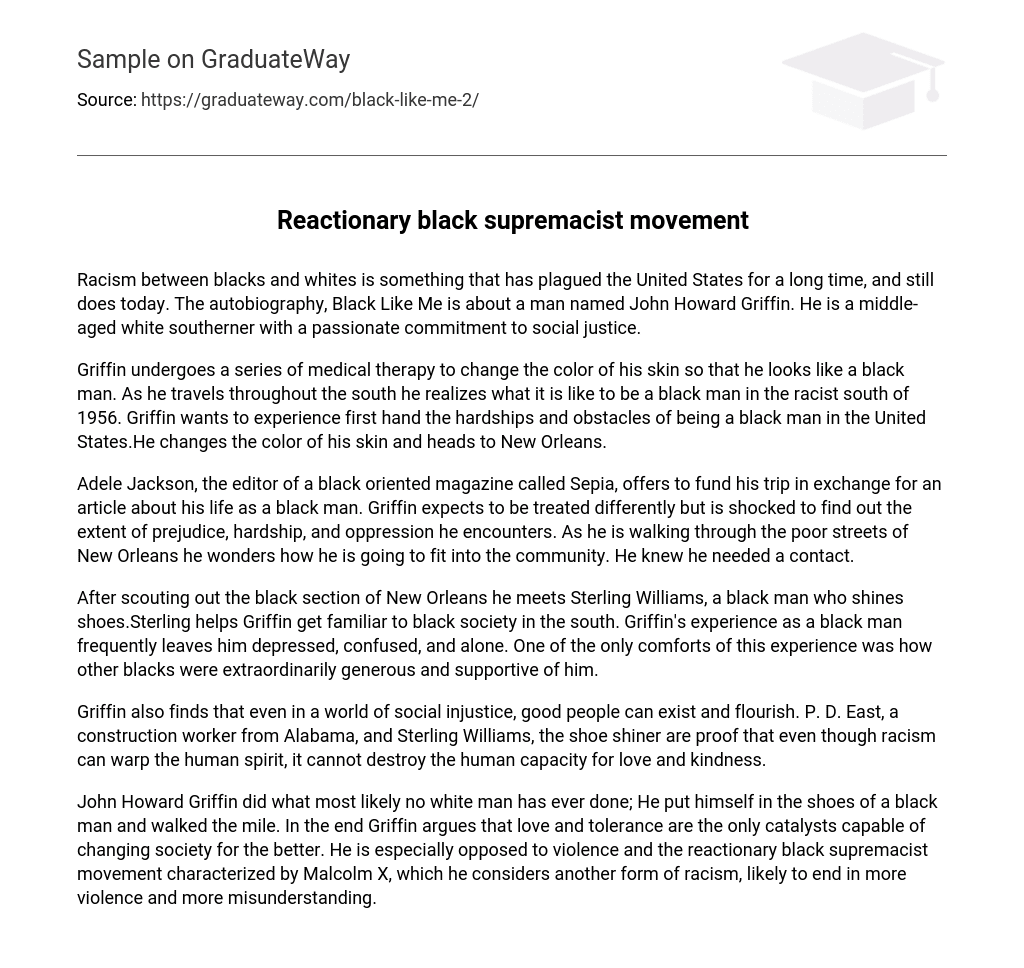Racism has always been a persistent issue in the United States, specifically between blacks and whites. This problem remains prevalent even today. An autobiography titled Black Like Me recounts the experiences of John Howard Griffin, a white southerner who was deeply committed to social justice. The book chronicles his remarkable transformation.
Griffin embarks on a journey to transform his skin color to resemble that of a black man through multiple medical treatments. His goal is to gain a firsthand understanding of the challenges faced by black individuals in the racially discriminatory southern regions of the United States in 1956. With his new appearance, he ventures to New Orleans to begin this eye-opening experience.
Adele Jackson, editor of Sepia magazine, agrees to finance his journey on the condition that he writes about his experiences as a black man. Griffin anticipates receiving special treatment but is astounded by the magnitude of discrimination, difficulty, and subjugation he confronts. While strolling through the impoverished streets of New Orleans, he ponders how he will assimilate into the community and realizes he requires a point of contact.
After exploring the black area of New Orleans, Griffin encounters Sterling Williams, a African American gentleman who works as a shoeshiner. Sterling assists Griffin in becoming acquainted with African American culture in the southern region. Being a black man, Griffin often feels melancholic, perplexed, and isolated. However, he finds solace in the fact that other black individuals exhibit exceptional generosity and provide unwavering support to him.
Griffin discovers that amid social injustice, there can still be the presence and thriving of virtuous individuals. P. D. East, an Alabama construction worker, and Sterling Williams, the shoe shiner, serve as evidence that while racism has the power to manipulate the human soul, it cannot eradicate humanity’s ability to display love and kindness.
John Howard Griffin accomplished a feat that is likely unparalleled by any white man; he immersed himself in the experiences of a black man and gained first-hand understanding. Ultimately, Griffin asserts that love and acceptance are the sole forces capable of improving society. He holds a strong opposition towards violence and the reactionary black supremacist movement epitomized by Malcolm X, viewing it as another manifestation of racism destined to perpetuate violence and misunderstanding.





